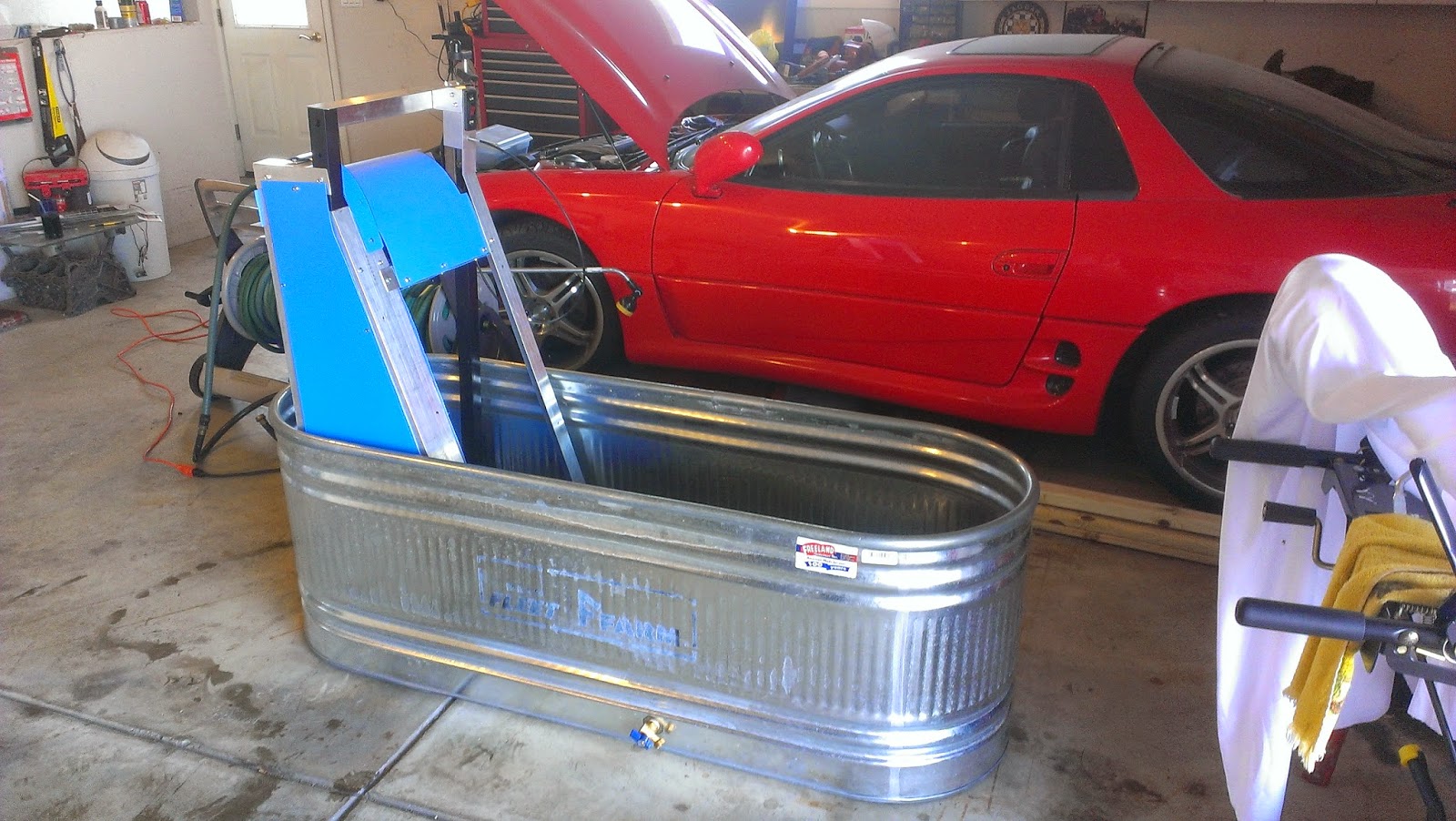Well, not exactly.
First I got a "Pigtail" from work. Basically a little electrical cord that turns any outlet into a GFI outlet, which is important if you are going to be in the water with an electrical motor that may potentially get splashed. If you are planning on doing this yourself also you should definitely be using a GFI outlet or a GFI pigtail. This is no place to skip a corner, as it will result in you and/or your dog getting fried.
Also, when I discussed my plan with the local Vet (in particular their hydrotherapy specialist), and got their opinion on an exercise plan. They said it was important to use warm water as it would help improve blood circulation and reduce stiffness in Austin's leg as he walked. They also told me to start out at three minutes a walking session twice daily, and that each day the time could be increased by up to ten percent.
I used my kitchen sink, which was close to my garage door, and a hose connection to fill the tank with warm water, but that took about two to three hours to fill the tank. After my first few times I started to use a large pot and a propane burner to heat large amounts of water at a time. When I first started doing this it was winter in Wisconsin, so it was also important to make certain that Austin had "done his business" before he went in, because he stayed wet for about three hours afterwards, even with a good towel, and his shaved leg meant he had no protection against the elements.
Austin and me in the tank with the treadmill running. Please note my sexy swim trunks, and my charming bride feeding him small bits of cheese to keep him walking happily.
Austin's first time in the treadmill was not overly smooth. He did not understand the concept of a moving floor at all, and continually fell off the back of the treadmill and then I had to shut it down and restart it. We tried peanut butter on a spatula, beef jerky, and finally pieces of cheese before he was motivated enough to try out the "moving floor."
Quite quickly after he figured out how to not fall off the back of the treadmill he also realized that he could stand on the side of the treadmill with his right two legs on the rail, and his left rear leg was short enough not to touch the treadmill, which then meant he only had to "walk" with one leg. That necessitated the need for me to put on my trunks and get in the water with him. Nothing like an Engineer with faith in his design, right?
Austin took to the underwater treadmill walking quickly, and in a few weeks as we went for longer and longer walks, it didn't feel like three hours of wasted time filling a tank for a three minute walk. In fact, about the time he started going for forty five minute walks by himself in the tank, I finally felt like my effort was paying off.
Austin going for a walk by himself in his treadmill. He likes to lick the water when he gets tired. Also, in this picture you can see the reinforcing I added for the "intermediate pulley set."
One thing my wife and I did not realize was how full of energy Austin would be after he got out of the tank. It doesn't matter if he goes on a brisk walk for a few minutes or just over an hour (which is currently the longest he has ever gone.) when he gets out of the tank all he wants to do is run, jump, and play. He seems to be much more mobile, as from the time we got him from the humane society to present, the only time he really jumps up on people is after using the treadmill, probably because it eases the pain in his hip that much.
After his next Vet check up the doctor commented on how well Austin was doing and inquired if we were taking him anywhere for therapy. When my wife told him about the DIY underwater treadmill he insisted on seeing pictures of the unit and asked if I was selling any. I'm not up for selling any, but I thought I would post this blog so that if anyone else was in need they could find it and do the same thing.
Austin with his new squeaking dragon plushie toy, which lasted about three days.
Austin has been using the treadmill at least twice a week now for six months or so and everything is still working, so I decided it was time to post up the results. He his a happy dog that enjoys playing with the neighbor's setter/lab mix and while he can't run quite as fast or jump quite as high he holds his own just fine. He has recently started jumping off our four foot retaining wall because it's just a touch faster when he's fetching a ball, so obviously his hip is feeling better. He'll never be a high jump champ, or be a long distance runner, but he gets around about as well as any other four legged friend, and he is better than most at relaxing on the floor and watching a formula 1 race with me on Sunday mornings.











